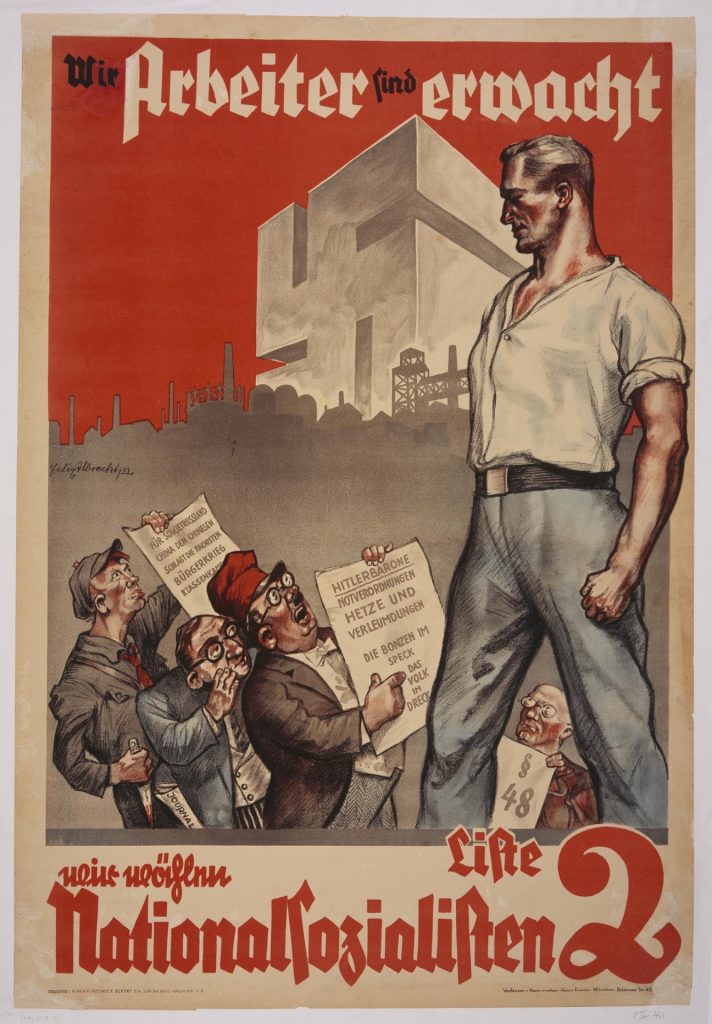World War Two
Being in Nazi Germany and an emerging designer, political design was everywhere. Propaganda was a key element that helped promote Nazi ideology into society and in 1930’s Germany, innovative Design was clearly affected. Nazi ideology was a very right wing way of thinking as its society ways were very traditional ; any forms that contrasted this was sought out and destroyed by the Nazi regime. Design was very relevant WWII as propaganda helped promoted different ideals depending which side you fought on. Propaganda could involved very aggressive imagery that had strong and forceful typefaces, usually serif. With these methods, the Nazis expressed their hatred for many opposing and outcasting groups. Modern Design was considered a left wing form of propaganda, so this practice of this art becoming threatening to the nazis so this began the controlling and the strict hold many artist were under.
Due to the pressures the Nazi had, many artists chose to flee from Germany, with many going to the United States. United States represented a safe space for many artists as it created a creative freedom for many. This started a massive creative shift into the United States and helped created the Modernist movement.


Modernism
When coming to America, the modernise art was not as popular as it was until after the 1930s, due to it being rejected in 1913. When the Movement became active some of its elements were established and many of its rules became more geometric with their approach to art.
Some of there’s forms where:
• The use of the primary colours within the design and establishing a visual hierarchy
That helps create aesthetic to artists work.
• The use of San Serifs replace Serif creating a more geometric and futuristic style within design.
• The use of new and innovative ideals that cause a more simple effect within design.
These ideals help push people to break the social norms at that time and allowed many to express individual and freedom. These ideals not only invaded artistic movement but other forms of creative collections within society.
International Typographic Style
From the aftermath of WWII, its harsh impact had become; with many artist fleeing Europe to escape that threat that was placed upon artists. The Bauhaus School was a innovative school in Europe that allowed many paths in art to be taken, but it was this that ended to its closure due to the Nazi ideals. With these ideals pushed away, many felt a need off a revival of what was once banned to make its comeback and it was in the 1950s that the Switzerland and Germany Emerged to create the International Typographic style Movement .Artists such as Josef Müller-brockmann, and Armin Hofman became so successful in this field of art with Armin Hofman helping leading this movement for many other inspiring artists. What did the Swiss Movement want to achieve? Very similar to Modernism, this movement strode for geometric and San serif forms while the burst of colour was used and that futuristic outcome was desired; this movement and artistic style had continued through the 50s and later in the 80s. This art is still heavily influenced through our modern life style with many creating careers around this style.
Both images are work on Armin Hofman.

